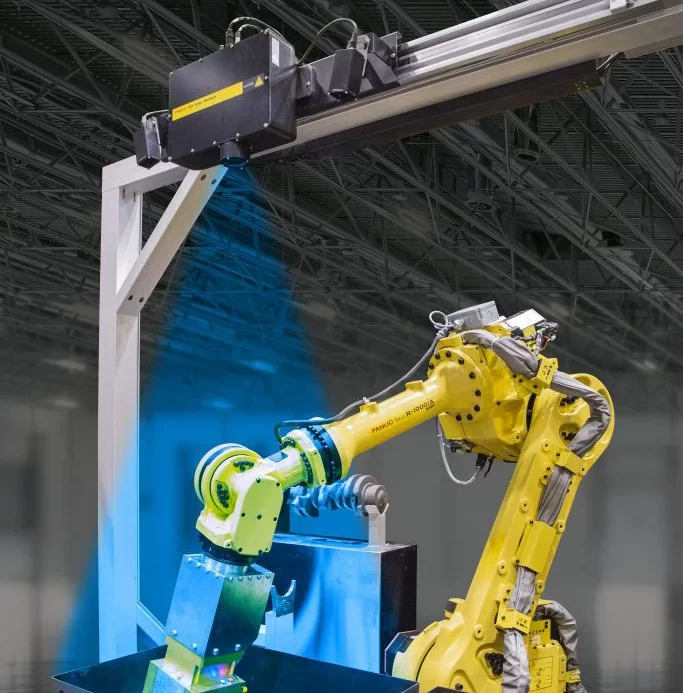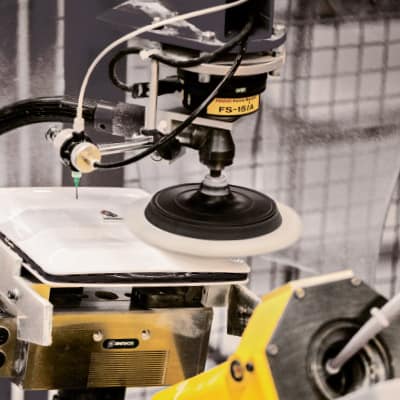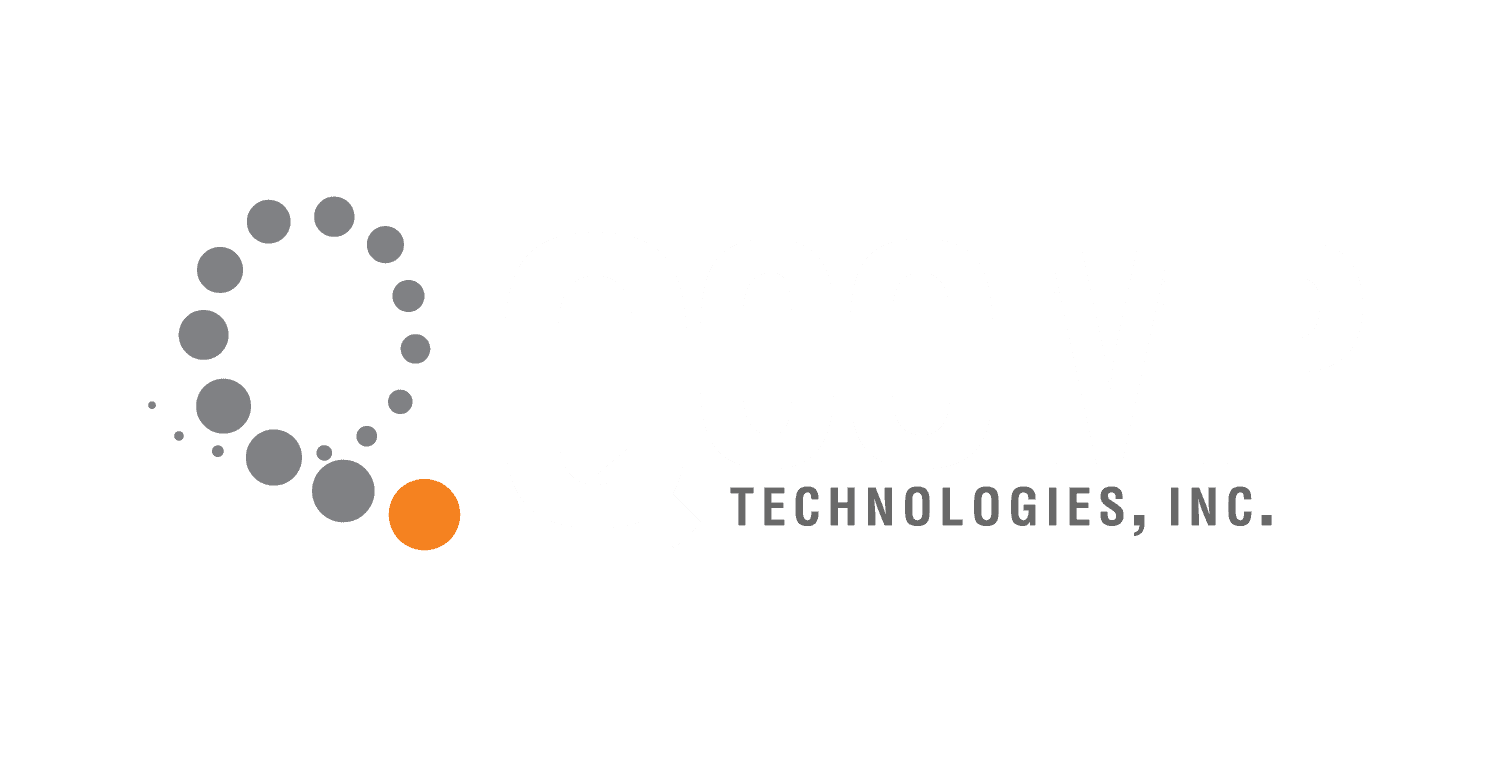Innovation
Introducing the QComp See.Feel.Think approach to robust robotic solutions
Vision Guided Robotics-2D/3D Technology

Machine vision has played a vital role in the evolution of industrial robotics, and the two are becoming increasingly integrated. A main reason for this trend is that cameras have become more powerful and more accurate in rugged industrial settings than ever before.
While robotic capabilities have certainly improved too, it’s been the ability of cameras to let robots SEE what’s around them. One of the major benefits of machine vision being used in industrial robots is increased flexibility.
Related to flexibility and less programming, robots with machine vision don’t need to have precision part placements to do their job productively. The ability of a robot to adjust to its environment allows it to pick up, locate and/or work on a part in any orientation.
There are many benefits of using industrial robots with vision, but increased flexibility, reduced programming time and less investment in loading/unloading processes are some of the most obvious benefits.
Advanced End of Arm Tooling with Force Feedback

Today’s robots have a wide range of applications, from the seemingly simple to the more dangerous and technical. Researchers have been developing and introducing more object-sensing capabilities to robots so tasks are completed with a higher level of precision. A force/torque (FT) sensor is one such device that allows robots to be able to feel forces exerted in all directions, making it an integral part in robotics.
Force/Torque sensors provide robots the ability to feel the process that they are performing. This sense of touch can be used for tasks as simple as detecting when a part has been pushed up against a guide rail in a punch press application, or in extremely dexterous applications such as buffing the perfect shine on a hand-built concert grand piano. The ability of robots to sense their surroundings allows them to adapt their processes in applications with multiple complex variables.
Artificial Intelligence Enhanced Controls

Artificially intelligent robots are the bridge between robotics and AI. Most industrial robots are programmed to carry out a repetitive series of movements which, as we have discussed, do not require artificial intelligence. AI algorithms are necessary when you want to allow the robot to perform more complex tasks. An autonomous mobile robot use a path-finding algorithm to navigate around the warehouse.
Imagine you wanted to add a camera to your robot. Robot vision comes under the category of “perception” and usually requires AI algorithms. The QComp Positrac™ algorithms found in the RackPack solution is an example of a combination of artificial intelligence and vision…creating a solution that sees and thinks its way to more reliable productivity.
